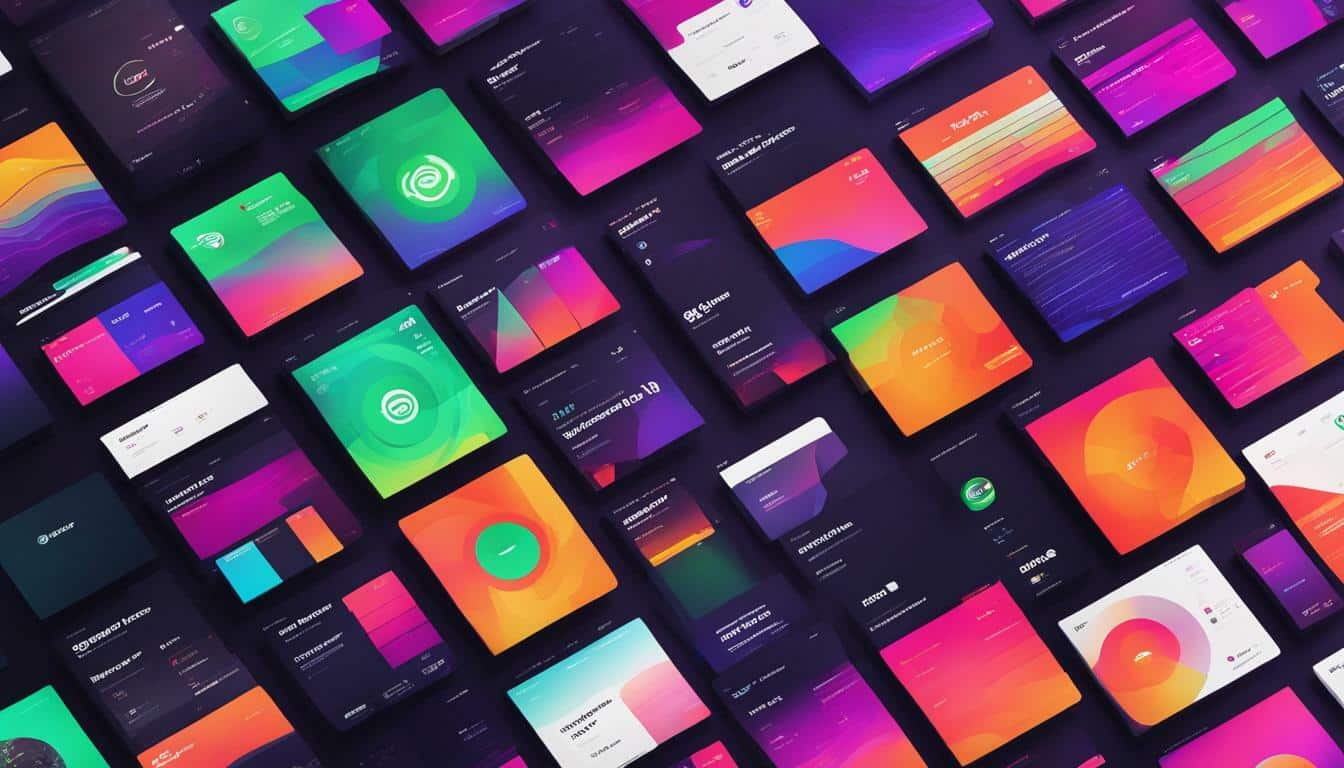Spotify is one of the most popular music streaming platforms globally, offering its users access to a wide range of songs and podcasts. However, as with any free service, users need to endure a certain amount of advertising to keep the platform running. Understanding how often Spotify ads play is crucial for users who want to manage their listening experience effectively, and advertisers who want to make the most of their campaigns.
In this section, we will explore the frequency of Spotify ads and provide you with a comprehensive guide on how often they play. We will delve into the factors that influence ad frequency, how ads are scheduled and placed on the platform, and strategies to manage ad interruptions. By the end of this guide, you will have a better understanding of Spotify ad frequency to help you optimize your listening experience or advertising campaigns.
Key Takeaways:
- Understanding how often Spotify ads play is crucial for both users and advertisers.
- Factors such as ad scheduling and placement influence ad frequency.
- Analyzing patterns in ad frequency can provide insights into user behavior and demographics.
- Users can manage ad interruptions through premium subscriptions or ad-blocking software.
- Advertisers can optimize their campaigns for maximum impact by understanding Spotify ad frequency.
Factors Influencing Spotify Ad Frequency
Spotify’s ad frequency is influenced by several factors, including user behavior, advertiser demand, and available inventory. By understanding these factors, advertisers can optimize their campaigns for maximum effectiveness, while users can manage their listening experience to minimize interruptions.
Demographics
Spotify’s ad frequency can vary based on the demographic of the user. For example, certain age groups may be targeted more frequently by certain advertisers, leading to more frequent ad interruptions. Additionally, users in different regions may encounter different ad frequency depending on advertiser demand and local inventory availability.
User Behavior
Another factor that influences ad frequency on Spotify is user behavior. For example, users who frequently skip songs or playlists may encounter more ads, as advertisers may see these users as less engaged and therefore more likely to be influenced by an advertisement. On the other hand, users who listen to long, uninterrupted sessions may encounter fewer ads.
Advertiser Demand
Ad frequency on Spotify can also be influenced by advertiser demand. Advertisers who are willing to pay more for ad placement may have their ads played more frequently, as they are bidding for priority placement. Similarly, advertisers who are targeting a specific audience may increase their ad frequency to ensure their message reaches their intended audience.
Available Inventory
The availability of ad inventory can also impact Spotify’s ad frequency. As more advertisers compete for limited ad space, the frequency of ads may increase. Conversely, when supply outstrips demand, ad frequency may decrease.
By understanding these factors, advertisers and users can make informed decisions about how to manage Spotify’s ad frequency. Advertisers can optimize their campaigns for maximum effectiveness, while users can manage their listening experience to minimize interruptions.
Ad Scheduling on Spotify
Spotify employs a complex ad scheduling system that takes into account user behavior and demographics to determine when and how often ads are played. Ad scheduling on Spotify is based on a combination of ad inventory availability, ad targeting, and user listening behavior.
Spotify’s ad scheduling system is designed to ensure that ads are played at appropriate intervals and are not overplayed, which can lead to user fatigue and a negative listening experience. The ad intervals on Spotify vary depending on a number of factors, such as the user’s location, device type, and listening habits.
Spotify also offers advertisers the flexibility to choose ad scheduling options that suit their campaign objectives and target audience. Advertisers can select specific times of day or days of the week to schedule their ads, or they can use Spotify’s automated ad scheduling system to optimize the delivery of their ads.
Ad scheduling on Spotify is a crucial element of any successful advertising campaign on the platform. By understanding how ad scheduling works and implementing an effective ad scheduling strategy, advertisers can maximize the impact of their campaigns and reach their target audience more effectively.
Placement of Ads on Spotify
Spotify offers various options for ad placement within its platform. Advertisers can choose among audio, video, and display ad formats that appear before, during, or after the users’ listening experience.
Audio ads are played in between songs, while video ads appear between videos on the users’ playlists. Display ads are shown on the Spotify app’s homepage or on users’ screens.
The placement of ads is crucial, as it can greatly impact their effectiveness. Advertisers must consider the user’s context and mindset when choosing where to place ads. For example, displaying an ad when a user opens the Spotify app is more likely to capture their attention than playing an audio ad in the middle of a song.
Understanding the different ad placement options can help advertisers make informed decisions about where their ads will appear and how often they will be played. It can also help them optimize their campaigns for maximum impact and return on investment.
Patterns in Spotify Ad Frequency:
By analyzing patterns in Spotify ad frequency, we can better understand when and how often ads are played on the platform. While the frequency of ads can vary depending on several factors, such as user behavior and demographics, there are certain trends that can be observed.
One common pattern is the placement of ads at the beginning or end of a listening session. This is known as “bookending” and is a tactic used by advertisers to ensure that their ads are heard by users who may skip or tune out during the middle of a music stream. Another pattern is the use of frequency capping, which limits the number of times a user sees the same ad.
On average, Spotify users can expect to encounter between 4-6 ads per hour of listening. However, this can vary depending on the user’s location, subscription status, and listening habits. Users who listen to longer playlists or podcasts may encounter ads less frequently than those who listen to shorter tracks.
It’s essential for advertisers to be aware of these patterns and adjust their campaigns accordingly to optimize their impact. Understanding ad frequency patterns can help advertisers make informed decisions about when and how often their ads should be played to reach their target audience most effectively.
Number of Ads on Spotify Per Hour
One of the most commonly asked questions by Spotify users is, “how many ads on Spotify per hour?” The answer to this question can vary depending on various factors, including the user’s listening habits, location, and time of day.
On average, non-paying Spotify users can expect to hear around two to three ads per hour of listening. However, this can increase during peak hours or if the user has been inactive for a while. Additionally, the duration of ads can also impact the number of ads played per hour.
It’s important to note that paid Spotify subscribers can enjoy an ad-free listening experience, eliminating the need to worry about the number of ads played per hour. However, if you’re a non-paying user, there are techniques you can use to decrease the number of ads you hear. For example, taking breaks between songs or creating playlists with fewer songs can reduce the number of ads necessary.
Overall, while the number of ads played per hour on Spotify is not set in stone, understanding what factors contribute to the ad frequency can help users plan their listening experience and advertisers target their campaigns more effectively.
Strategies to Manage Spotify Ad Frequency
While Spotify ads are a necessary part of the platform’s revenue model, they can sometimes be interruptive to the listening experience. However, there are strategies you can use to manage the frequency of Spotify ads:
- Upgrade to Premium: One of the simplest ways to reduce the number of ads you encounter on Spotify is to upgrade to a premium subscription. This will eliminate all ads from your listening experience, allowing for uninterrupted music streaming.
- Use Ad-Blocking Software: If you prefer not to pay for a subscription, you can use ad-blocking software to remove ads from your Spotify experience. Keep in mind, however, that this may not be a viable option for everyone, as it can violate Spotify’s terms of service and lead to account suspension or termination.
- Listen During Off-Peak Hours: Another way to reduce the frequency of ads on Spotify is to listen during off-peak hours. Advertisers tend to schedule more ads during peak listening hours, so avoiding those times can help minimize interruptions.
- Use Crossfades: Spotify’s crossfade feature allows songs to blend seamlessly into one another, reducing the impact of ads on the listening experience. By setting the crossfade to a longer duration, you can minimize the disruption caused by ads.
By using one or more of these strategies, you can manage the frequency of Spotify ads and enjoy uninterrupted music streaming.
Conclusion
Understanding the frequency of ads on Spotify is important for both users and advertisers. By analyzing the factors that influence ad frequency, advertisers can optimize their campaigns and reach their target audience more effectively. Users, on the other hand, can manage their listening experience by employing strategies such as premium subscriptions and ad-blocking software.
Spotify’s ad scheduling system is designed to maximize the impact of ads while minimizing disruption to the user experience. By understanding how this system works, advertisers can make informed decisions about when and how often their ads will be played.
Overall, Spotify ads are an essential element of the platform’s revenue model and allow users to enjoy quality music for free. While the frequency of ads may vary based on user behavior and demographics, the availability of premium subscription options and ad-blocking software provides users with the flexibility to customize their listening experience.
FAQ
Q: How often do Spotify ads play?
A: The frequency of Spotify ads can vary depending on several factors, including your listening habits, device, and location. However, on average, you can expect to encounter ads roughly every 15 to 30 minutes of listening time.
Q: What factors influence Spotify ad frequency?
A: Several factors can influence the frequency of ads on Spotify. These factors include the type of Spotify account you have (free or premium), the number of ad slots available, the time of day, and your listening history. Advertisers can also play a role in determining ad frequency through their campaign settings.
Q: How does ad scheduling on Spotify work?
A: Spotify utilizes an ad scheduling system to determine when and how often ads are played. The intervals between ad placements can vary, but Spotify aims to provide a balanced listening experience for users while still delivering value to advertisers. The ad scheduling process takes into account various factors such as user engagement and available ad inventory.
Q: How are ads placed within the Spotify platform?
A: Ads on Spotify are strategically placed to maximize their impact. They can appear in various formats, including audio ads, video ads, and display ads. The placement of ads depends on factors such as the user’s device, the type of content being consumed, and the advertiser’s targeting preferences.
Q: Are there patterns in Spotify ad frequency?
A: Yes, there are patterns in Spotify ad frequency that can be observed. For example, you may notice that ads tend to play at the beginning or end of a playlist, or during natural breaks in between songs. These patterns may also vary depending on factors such as user behavior and demographics.
Q: How many ads can I expect on Spotify per hour?
A: On average, users can expect to encounter approximately four to six ads per hour of listening on Spotify. However, this number can vary based on factors such as your location, the time of day, and your specific listening habits.
Q: How can I manage Spotify ad frequency?
A: If you find the frequency of Spotify ads interrupting your listening experience, there are strategies you can employ. One option is to upgrade to a premium subscription, which offers an ad-free experience. Another option is to use ad-blocking software or extensions that can help minimize the impact of ads. Keep in mind that these strategies may have associated costs or limitations.
Q: Conclusion
A: Understanding how often Spotify ads play is essential for both users and advertisers. By considering factors such as ad frequency, scheduling, placement, and patterns, you can optimize your advertising campaigns or manage your listening experience effectively. Whether you’re an advertiser seeking to reach your target audience or a user looking to enjoy your music uninterrupted, this guide has provided valuable insights into Spotify ad frequency.







